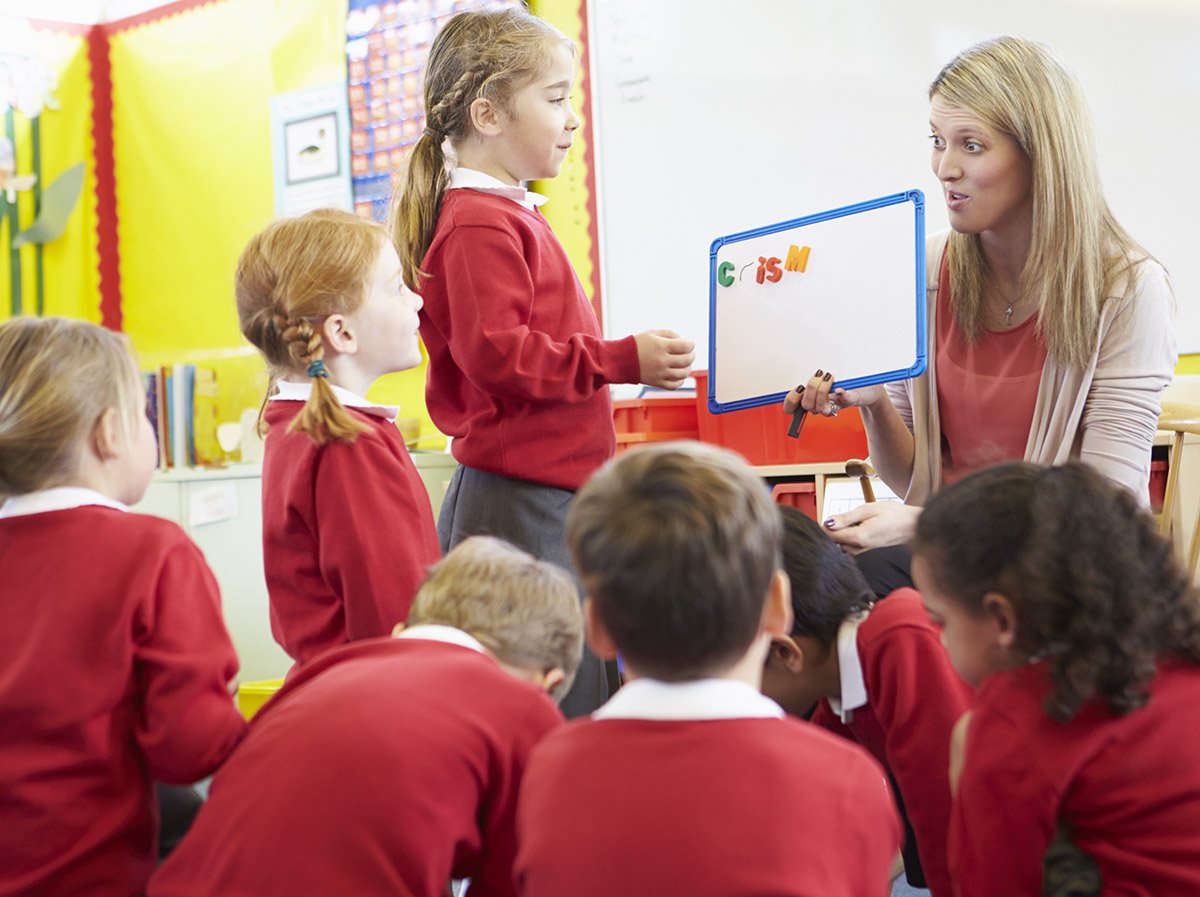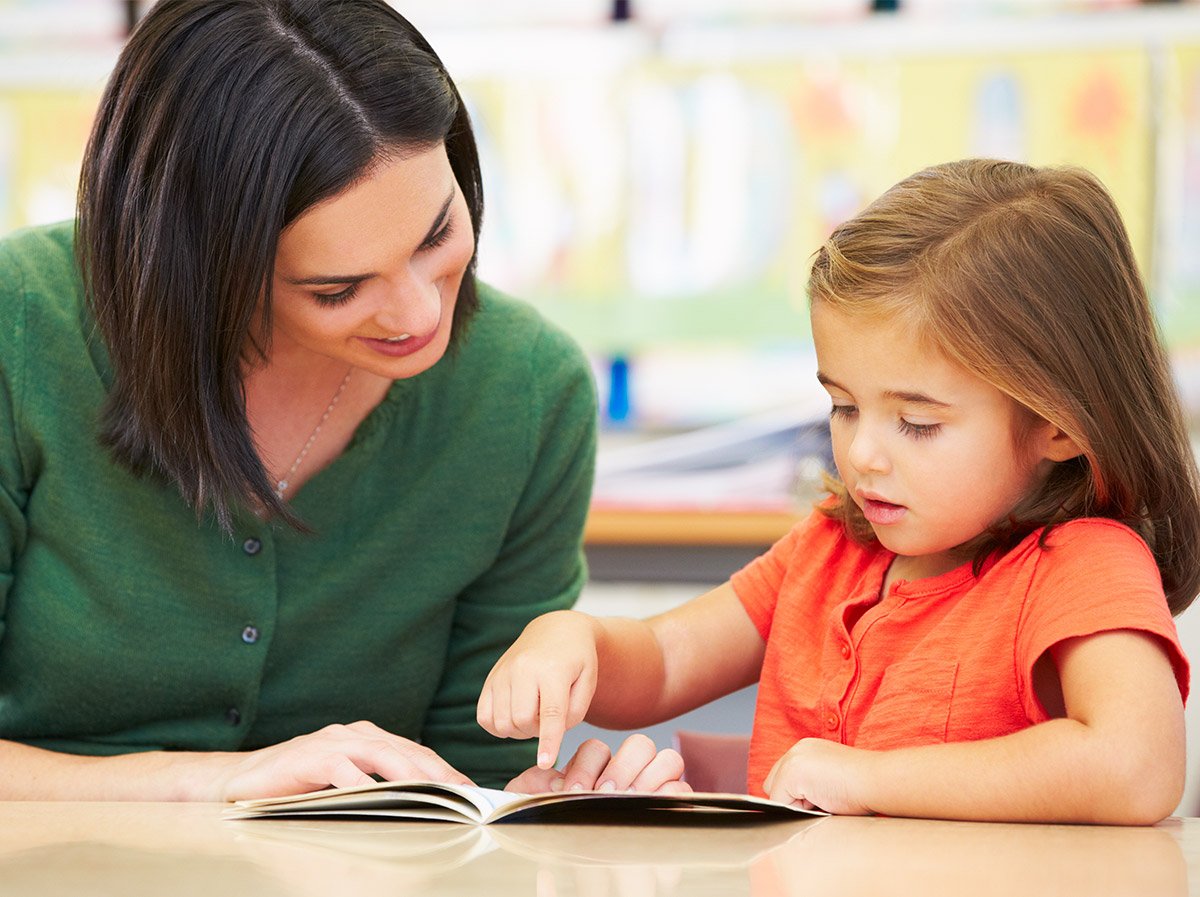Teachers are lifelong learners (when we have the time)! We are constantly on a learning journey, whether we have two years of teaching experience, or twenty! You may stumble across an article that discusses best practices, for example teaching algebra to young children – you see the potential and start to implement some of the concepts into your classroom, easy! However, movements such as the Science of Reading research, entail a mind shift in not only your teaching but your whole school. It can get very overwhelming!
The Science of Reading is a culmination of major research from English-speaking countries that have been consistent in their findings on learning to read and the teaching of reading.

Shutterstock.com / Sondem
We had a chat with Clare Wood, a Literacy specialist from Tiny Steps Make Big Strides, who wants to educate teachers about this research-based approach. In this blog, we aim to explain what you should know about effective literacy instruction through the guidance of this research.
8 Ways to Support Effective Literacy Teaching
-Using the Science of Reading Research as a Guide-
Learning to read is a complex skill. It requires effective instruction from educators who are trained to support students from the very beginning. Phonics is crucial but is only part of the solution that would see all students receiving effective literacy instruction. Early years classrooms should be the powerhouse of all schools. The teacher who makes links between speaking, listening, reading and writing from the start will help their students connect the dots faster.

Shutterstock.com / Monkey Business Images
“The use of decoding strategies, positive error feedback and targeted instruction through a content-rich curriculum will increase reading skills and positively impact on comprehension and vocabulary.” – Clare Wood (Literacy Specialist)
(1) Know and Understand Literacy Terms
It’s often hard to keep track of all of the different literacy terms, especially those associated with teaching children to read. But, having a solid understanding of these definitions will help you, as the teacher, weave them all together. Using these terms in class, as they are needed, can also be helpful for the children in your class.
- Phoneme – smallest unit of oral sound.
- Grapheme – letter or letter string that represents a phoneme.
- Schwa – the most common vowel sound, the unstressed vowel that can cause blending and segmenting issues. For example, the ‘uh’ at the end of butter and colour.
- Phonics – systematic instructions that involve teaching children the sound to symbol correspondence to help them read, write and spell.
- Phonological awareness – having an awareness of the sound properties of words (can be done with your eyes shut). This is an umbrella term for sounds (phoneme) awareness, rhyming, alliteration, syllables, as well as onset and rime.
- Phoneme awareness – a category of phonological awareness, that is being aware of the individual sounds within words.
- Continuous letter sounds – sounds that can be said for multiple seconds such as – ‘s’ or ‘m’.
- Morphemes – smallest unit of meaning. For example, the word ‘cat’ is one morpheme and ‘cats’ is two morphemes (the ‘s’ at the end indicates there are more than one).
- Orthography – the correct spelling of words (from the Greek meaning ‘ortho’ correct or straight – graphy – writing).
- Orthographic mapping – the mental process we use to store words for automatic retrieval.
(2) Spoken Language Sets the Foundation
Many children enter our classrooms knowing a fair bit about language already. Effective instruction starts with this knowledge as a base and explicitly teaches students how print relates to the speech they already know. From there, children need to be taught that letters represent speech sounds, they don’t make sounds.
“Children should be taught to say sounds clearly, precisely and slowly. This, in turn, will help children to accurately segment and blend words as they learn to read words.” –Clare Wood (Literacy Specialist)

Shutterstock.com / Photographee.eu
(3) Systematic, Explicit Instruction is Key
Having an already defined scope and sequence will help ensure continuity of practice. Of course, this is where having a whole school approach will ensure systematic explicit teaching of literacy skills.
“The scope and sequence should start with a small set of letters that are used to build words from the beginning.” – Clare Wood (Literacy Specialist)
As an example, Clare suggests beginning with individual sounds in a sequence such as (s,a,t,p,i,n,m,d,g,o,c,k,e,r,u,b,h,f,l,j,w,v,x,y,z,q). Most programs start with ‘satpin‘ or similar because it yields the most words and has 2 continuous sounds to get students started with word building. She then suggests moving on to longer decodable words, then common digraphs, moving on to vowel and consonant sounds, and also incorporating prefixes, suffixes, and morphology.

Shutterstock / Monkey Business Images
(4) Reconsider the Use of Blends
The term ‘blends’ is confusing and does not fit with the Science of Reading research. When you consider how we teach children to decode using the smallest unit of sound – this concept makes sense. Let’s take the word frog as an example, it has 4 letters and 4 sounds (f/r/o/g). If children already know /f/ and /r/ they do not need to be taught (fr) as one unit.
“Blends are not helpful because they add to the cognitive load and can be very confusing.” – Clare Wood (Literacy Specialist)
In the early days, blending and segmenting need to be explicitly taught. Engaging children with activities such as using playdough to initially segment the word (push down on playdough for each sound), and then blend the sounds (roll the balls into one) are great to help with blending and segmenting.
Continuous blending is an effective way to teach children as it focuses on sounding out words with no stopping or pausing between sounds.
Hot tip: If children struggle to blend words, concentrate on words that start with continuous sounds. Sounds you can hold such as ‘m’ and ‘s’ Other continuous sounds are f, l, n, r, s, v, z. These sounds can be held without distorting their sound.
(5) Teach Decoding Strategies
This is one of the main differences between traditional methods of teaching children to read and the Science of Reading research. In the early years classroom, it is common to teach children a handful of reading strategies that can be drawn upon when children get stuck on a word. These strategies may include:
- using the pictures for guidance,
- skipping over words and coming back to them
- guessing words based on the context of the text
- using the first letter of the word to help.
The Science of Reading research has found that these strategies may not be needed to help children become fluent readers.
“Reading is not a guessing game. Effective readers use their phonics knowledge to break down words to read.” – Clare Wood (Literacy Specialist)
That’s not to say that teachers shouldn’t provide helpful strategies to help a child during reading if they get stuck on a word – we recently worked with Clare to create these Science of Reading Decoding Strategy Bookmarks. These bookmarks provide strategies that relate to decoding the word – rather than using other parts of the book to guess the word.
We have also created a Science of Reading Decoding Strategy Classroom Poster that can be displayed in the classroom as a reminder.
(6) Use Decodable Books
Clare also highlights the importance of using decodable texts with students so they feel empowered and confident as they will be able to truly read all words in the books.
Predictable books get confusing and they often rely on the picture to help children mimic reading the words.

“There are few early years’ students that could truly read ‘I have a crocodile’, ‘I have a giraffe’, ‘I have a bear’. There are far too many complex patterns going on. Decodable books are the gateway to beautiful texts. Decodable books work on a scope and sequence. Having children read decodable texts should not be at the expense of hearing great stories and other books. All classrooms should have a daily read aloud to encourage meaning-making, and to develop a rich robust vocabulary.” – Clare Wood (Literacy Specialist)
(7) Word Building Activities Are Powerful
Letters taught in isolation take too long and is not an effective way to build the segmenting and blending skills needed for fluency later. Effective instruction uses sets of letters to build words from the beginning.
Word building is an active process that engages all learners. We have this awesome CVC Word Building Mat, single letter cards that students can use when learning how to build and segment words using knowledge of phonemes.

As students actively participate in word building activities, they are building their skills of blending and segmenting sounds, and this develops brilliant word attack skills.
(8) Rework Sight Word Lists
Many schools use high frequency/sight word lists to support young children’s reading development. These lists can often be divided into two categories – those that are easily decoded using initial sounds, for example – and, at, it, can and up, and those that have irregular spellings such as said and the.
To break this down even further, Clare explains why you may want to revise your sight word teaching methods through the Science of Reading research…
“We do not learn whole words; we learn the letters and letter strings that correspond to our speech sounds. If the words on high-frequency lists were taught through the scope and sequence, students would be able to read far more words than the first hundred words by the end of their first year.” –Clare Wood (Literacy Specialist)
There are some words that come up all the time in the first year that students do need to remember e.g. the, is, was, of and so. If students encountered these in dictation activities and by the teacher modelling how the letters and sounds correspond there is a far more likely chance that all students would be able to recall these words faster.

Shutterstock.com / Soker Space







Comments